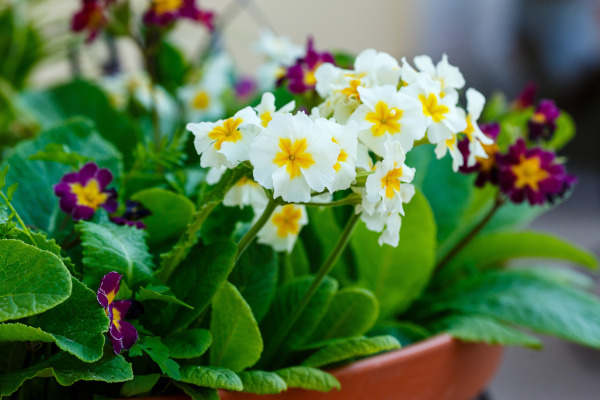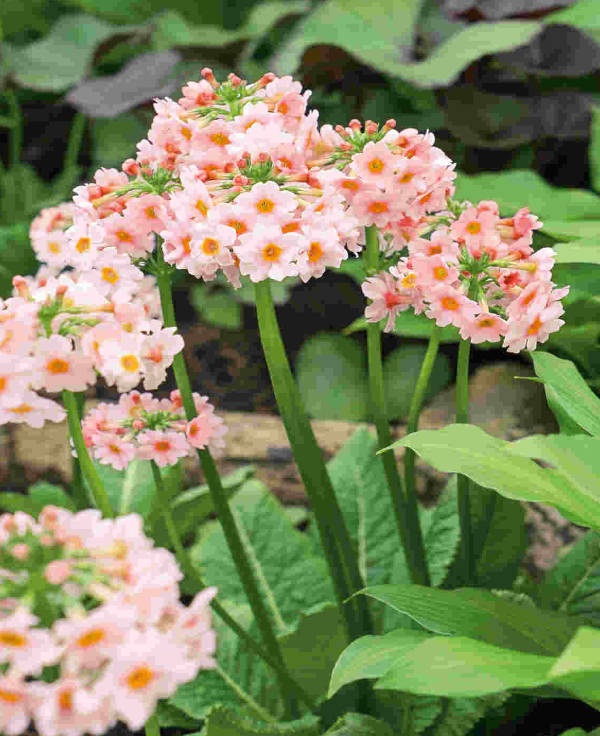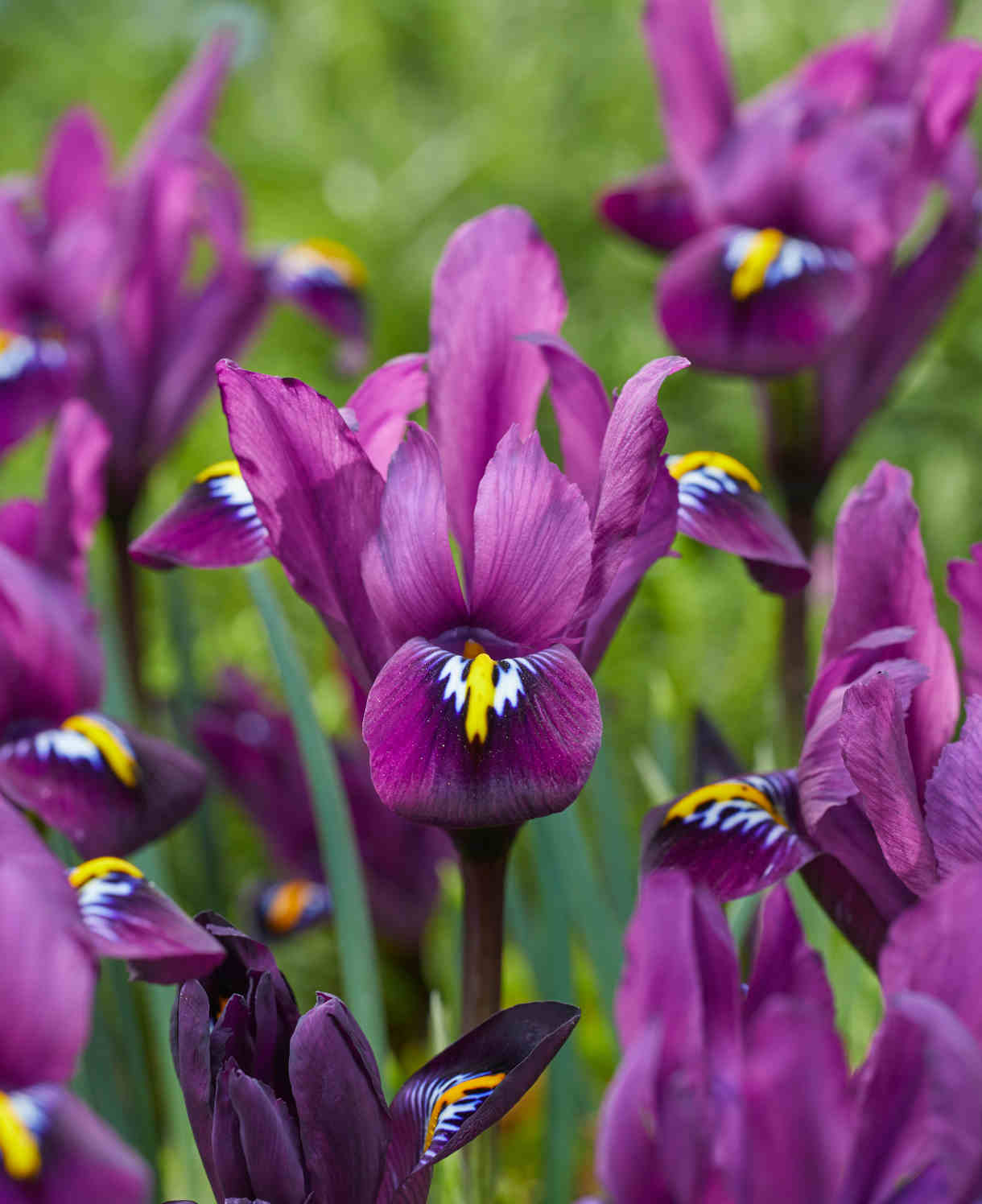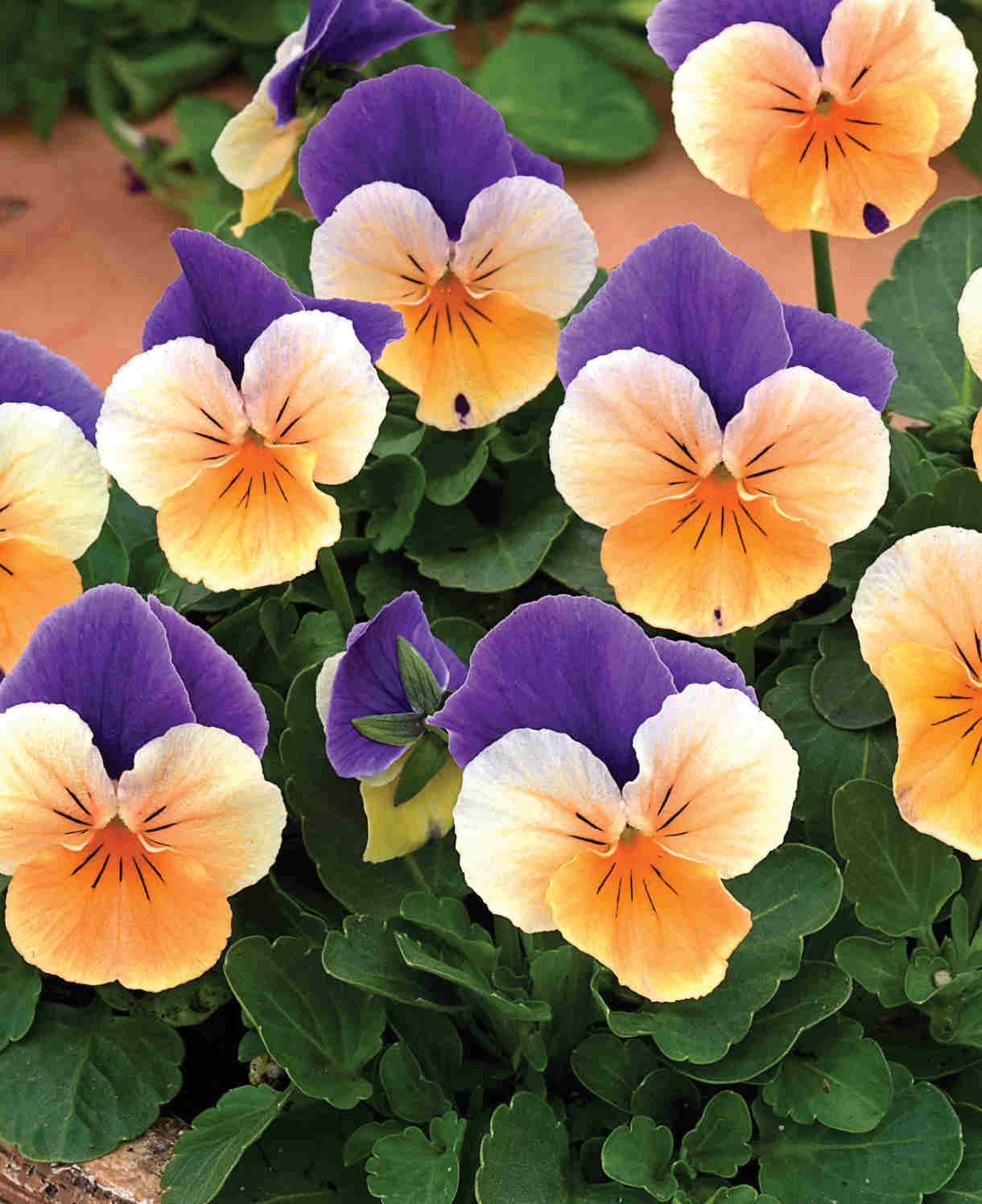How to grow Primula
The name ‘primula’ is the female derivative of ‘primus’, a Latin word meaning first. We can safely assume this name relates to the timing of flowering, with many primulas among the first plants to bloom each year.
Primula is a vast genus of over 400 species, widely distributed throughout the northern hemisphere in a range of habitats, from bogs and marshland to alpine areas. This diversity, coupled with an ability to hybridise, means primulas have long been a source of fascination for botanists and breeders, thus explaining the huge variety of cultivars and hybrids available. As such, we can say there is a primula to suit most situations, whether boggy, waterside, border, rock garden, greenhouse, and container display.
The primulas we tend to use in gardens can be loosely split into three main groups:
- Auriculas; evergreen, smooth leaved, often multi and vividly coloured. Commonly grown for displaying in pots or alpine houses, though some varieties are happy in a border.
- Candelabra; robust, deciduous to semi-evergreen, leathery leaved. Flowers borne in several whorls up tall, sturdy stems. At their best grown in groups by streams or in bog gardens.
- Primrose-Polyanthus; diverse group containing the common primrose, the cowslip, and many brightly coloured hybrids in between.

Key Information
Position
Hardiness


Where & when to plant Primula
Position - partial shade will be acceptable to all species, with some able to tolerate either deeper shade, or full sun (the latter tends to be only if soil is moist and humus-rich). Check individual variety for full details.
Soil - the soil preferences of primula vary from species to species, though a requirement for consistently moist, well-draining soil is somewhat universal. Check individual variety for full details.
Flowering Period - most varieties tend to be winter and spring flowering, though some flower into summer (often Candelabra types).
Hardiness - all the primula stocked by Hayloft are fully hardy
For best results, plant in autumn or spring. An autumn planting is suitable for those gardening in ‘mild’ conditions. (Broadly speaking, this is the southern half of the UK). For those liable to very cold winters or waterlogged ground, it is best to wait until spring. (This is generally the northern half of the UK, or anyone gardening on heavy, clay soil).
Planting can be done at other times throughout the year providing a watchful approach to watering is taken until plants are established.
Auricula
Auriculas with a powdery, white coating to their leaves and flowers are susceptible to blemishes inflicted by rainfall. It is for this reason these primulas are traditionally grown in pots and positioned in ‘auricula theatres’, with a roof to protect them from the rain. The auriculas sold by Hayloft are of the more robust kind, happy to be grown both in containers and borders. Nevertheless, for pristine, show-quality plants, you may wish to provide shelter from direct rainfall.
Candelabra
These moisture and shade loving primulas are happiest in bog gardens, pond margins, at the side of a stream or in damp woodland.
Primrose-polyanthus
The straight species in this group (think oxlip, cowslip, common primrose) are at their best naturalised in partial or dappled shade, perhaps beneath deciduous trees, or at the base of a hedge.
The more colourful hybrids and cultivars are best for providing early cheer in borders, troughs, and containers.
How to plant Primula
- Clear the area of weeds
- Dig an extra deep planting hole and add grit and well-rotted organic matter
- Place the plant in the hole
- Backfill with soil and gently firm in with foot
- Soak well with water
- Mulch around the base with well-rotted organic matter
- Continue to water well until fully established.

What to plant with Primula
Auriculas
Container grown auriculas go particularly well with sempervivum, being similar in scale and habit. Add in some dainty spring interest such as Iris reticulata, chionodoxa and crocus for a sparkling container display.
In the border, try mixing with some bright primrose-polyanthus and muscari.
Candelabra
These primulas combine well with other damp shade plants, such as hostas, ferns, astilbe, and lobelia. Lobelia is a particularly fine choice, as it comes into flower when candelabra primroses are starting to fade, ensuring a seamless, successional display.
Primrose-polyanthus
The straight species among this group (cowslip, oxlip, common primrose) go well alongside fellow ‘woodlanders’ such as bluebells, sweet cicely, ferns, and sweet woodruff.
The more colourful cultivars and hybrids mingle cheerfully with other spring blooming, cultivated flowers, such as those of muscari, daffodils, and violas.
If you would like any further planting ideas or growing advice for your primula, please contact our friendly and knowledgeable Customer Care Team - we will be more than happy to help you.



How to care for Primula
Pruning and Deadheading
Generally, all primulas benefit from deadheading. This is unless you wish them to naturalise in an area, in which case leave the flowers to set seed.
Tidy semi-evergreen and evergreen rosettes by removing old leaves in the winter.
Divide plants every few years to maintain health and vigour (see instructions in ‘How to propagate primula’ section below).
Watering
Water this moisture-loving plant well until established, then in very dry periods as required.
Cold Protection
All primulas sold by Hayloft are hardy, requiring no cold protection.
Pests and Diseases
Primulas grown in the ground and in the correct conditions tend to be pest and disease free. However, as is the case with most plants, those grown in containers can be more susceptible.
Issues to look out for with container-grown primulas include botrytis, or grey mould, which can be a sign of poor air circulation and overwatering. Remove any affected parts, space out plants, and reign in the watering if this occurs.
Another possibility is vine weevils. These are at their most devastating during larval stage, when they can attack a root system. Repot in fresh compost if an infestation is suspected, destroying larvae, and thoroughly disposing of old compost. Look out for tell-tale notching of leaves to alert you to the presence of the adults, as intercepting their laying of eggs in the soil will avoid problems with larvae later. This can be done by putting a gravel mulch in place or introducing nematodes (natural predators easily found for purchase online).
Aphid are another potential pest. Ensure plants are in good health i.e. adequately fed and watered, with sufficient airflow. Soap sprays can be effective in deterring infestations.
How to propagate Primula
Primulas are extremely easy to propagate by division. Do this after they finished flowering. Simply dig up a clump, separate plantlets from the main plant, and replant where desired.
Alternatively, many primulas are keen self-seeders, therefore allowing seed to ripen and fall will result in the natural formation of colonies.
Common Primula questions:
The crown of my primula is being eaten! What is doing this?
Mice have a penchant for these, particularly in cold spells. If the problem persists you may wish to temporarily protect plants with fleece or mesh.
The petals of my primula are disappearing.
Birds have been known to strip primula of their young petals. Cotton thread stretched over plants can be a good deterrent.




